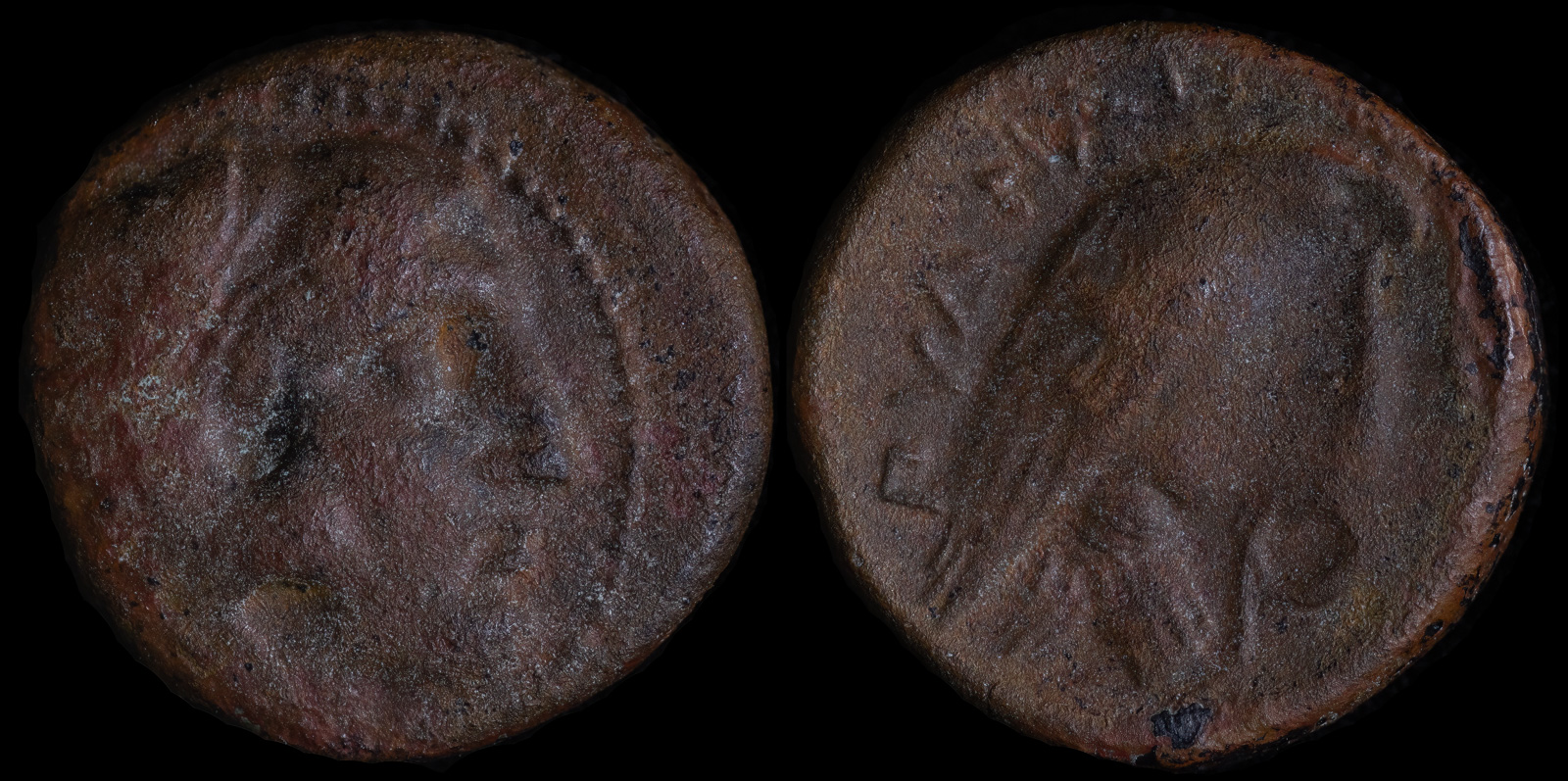
Macedon, Pydna
369-364 BCE
Æ 15mm 3,62g
OBV: Head of Artemis r.
REV: ΠΥΔΝ ΑΙΩΝ Owl standing r., head facing, on grain ear.
SNG ANS 701 var. (Artemis and owl l.); SNG Copenhagen -; BMC 4-5
Pydna played a crucial part in the Era of the Diadochi as being Olympias’ last refuge in 317 BCE. Kassander then besieged it and after some time forced a surrender. By the terms, Olympias’ life as well as that of Roxana and Alexander IV was to be spared, but Kassander decided otherwise.
He had difficulties executing her. The soldiers sent to complete it refused, and Kassander eventually convinced a mob of people she had wronged to stone her to death. He then left her body to rot unburied, though there is some evidence her descendants or sympathizers eventually buried her.
Pydna was long part of Macedonia, having been conquered no later than the realm of Alexander I. Athens at various times attempted to remove it from Macedonia’s orbit, and even temporarily succeeded in 364 BCE, though Philip II took it back in 357 BCE.
The similarities of Pydna’s coinage with that of Macedon, with Herakles on the obverse and an eagle on the reverse, illustrate this connection. Alexander the Great’s earliest coinage would be similar.
The site of Pydna has been occupied for at least 7000 years. Early in the history of Macedonia, it was its most important cities and its most important port, being the port for the capital of Aigai. In 168 BCE, the independence of Macedonia ended with its defeat to Rome at Pydna.

Macedonia, Pydna
381 – 369 BCE
AE 15mm 3.5g
Head of Herakles right, wearing lion skin /
ΠΥΔΝΑΙΩΝ; eagle standing right, devouring serpent held in talons.
SNG ANS 700
Athens unsuccessfully besieges Pydna.
King Archelaos of Macedonia besieges Pydna from land, while Athens besieges it from sea. The location of the city is then moved by Archelaos, but the citizens later move it back.
Philip II takes Pydna. He is supposed to give up Amphipolis to Athens in exchange, but ends up keeping both cities.
Olympias flees to Pydna to escape Kassander.
March
Kassander completes the siege of Pydna and executes Olympias. Alexander IV and Roxana are imprisoned in Amphipolis.
June 22
July
Philip of Macedon, after being defeated at the Battle of Pydna, stops briefly at Galepsos before heading to Samothrace.